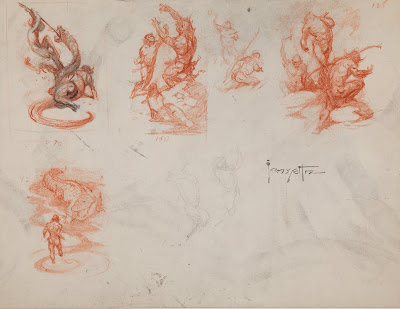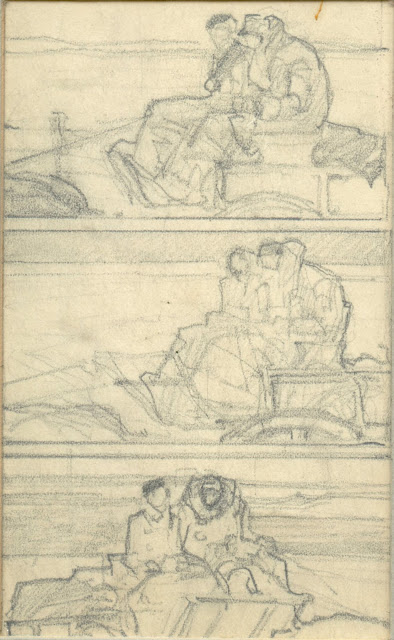Many years ago, the famous Chinese artist Huang Erh-Nan would fill his mouth with black ink and paint pictures with his tongue.
Ralph Steadman seems to love black ink only slightly less than Huang Erh Nan. Over a 60 year career he has splattered great gouts of dense black ink on his pictures, misted ink through an atomizer and scratched it into the surface with technical drawing tools. He describes this career in his new book, Ralph Steadman: A Life in Ink. The book contains a cross section of his work as a political cartoonist, a cover artist for album covers and movie posters, a children's book illustrator and perhaps most famously for his collaborations with Hunter S. Thompson.
 |
| Self portraits by Steadman in 1965 and 2020 |
The self-portrait above of Steadman in his covid mask is the only example I could find in the entire book of Steadman being muzzled. He seems to have started right out of the gate with outspoken, often barbed opinions.
 |
| 1967 |
 |
| 1975 |
 |
Detail from The Malevolence of War (2001)
|
When I spoke with Steadman about his career path, his choices seemed as impetuous as one of his ink splatters:
My first job was as an apprentice at an engineering factory in Liverpool. I went once a week to learn technical drawing. I was drawing straight lines and circles; I was going to do a 5 year apprenticeship but after nine months I had to leave. I couldn't stand it. My mother was very upset. She didn't know what to do with me. I eventually ended up working at Woolworth's as a stockroom boy. My headmaster saw me one day sweeping in front of the store and he looked at me with contempt. He said, "Look at you. You had a good job at de Havilland Aircraft Company and what do you do? End up sweeping the streets of Wales."
Yet, he stumbled across an ad for a correspondence art class and his long career was launched.
 |
| Book cover for Animal Farm |
 |
| Slash |
In addition to hundreds of pages of art showing the evolution of Steadman's style, the new book contains photographs from Steadman's life and an interesting interview discussing his philosophy.
At the end, Steadman lists his personal "Honour Roll" which includes his artistic heroes such as Marcel Duchamp, Terry Gilliam, William Hogarth, Anita Kunz, Ronald Searle and Leonardo da Vinci.
In addition, his honour roll includes Kurt Vonnegut, the Victoria & Albert Museum, and Winsor & Newton.
We are living in a great era for art books. Art publishers have been scooping up the best work from the top illustrators of the 20th century-- talented artists who led long and productive careers. Many of their brilliant images existed only in yellowing, crumbling back issues of magazines. They are being rescued from obscurity by monographs such as this one, which enable us to look at artists in a fresh light.


















































